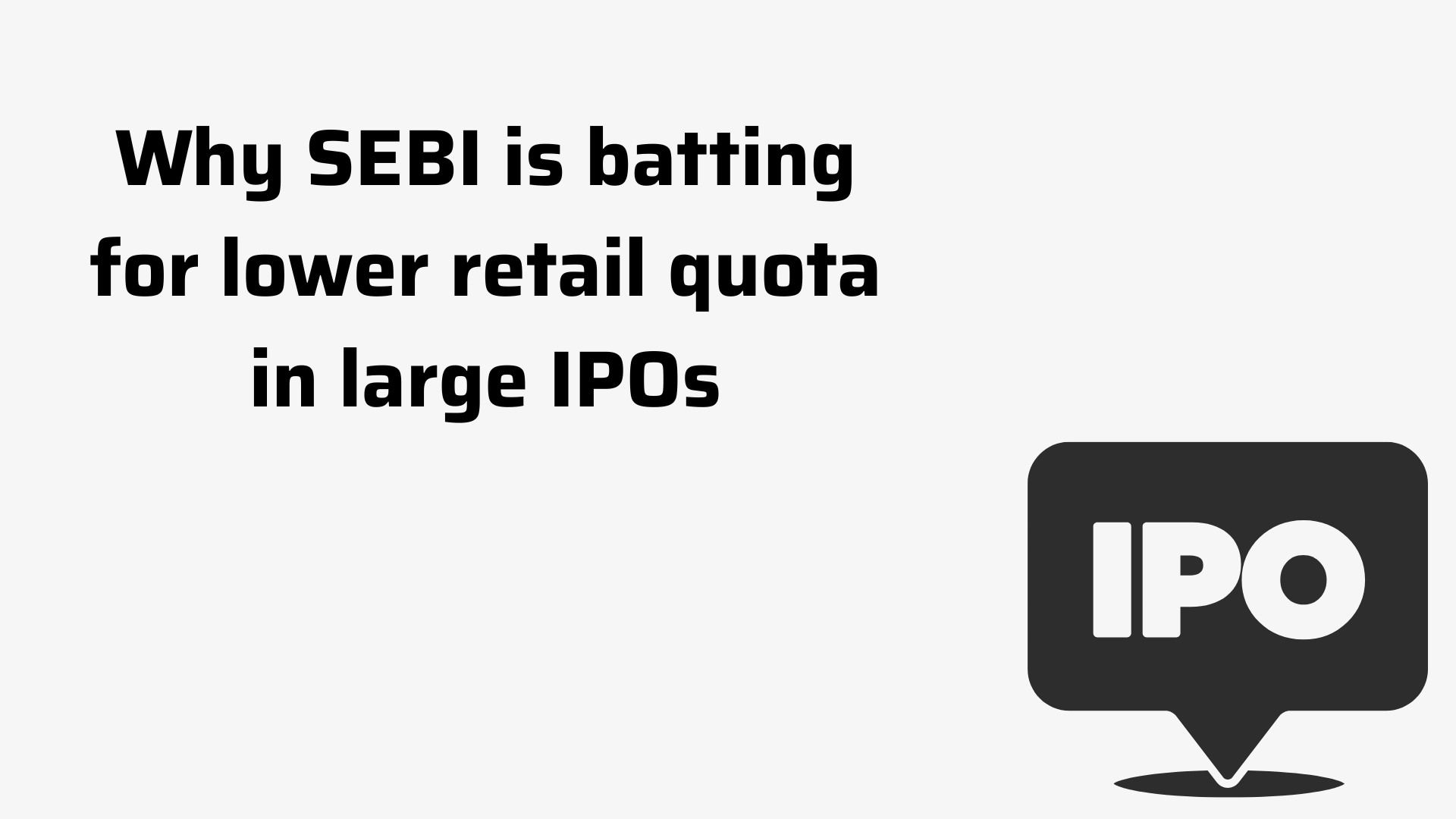Given the underwhelming retail response to a number of large initial public offers in the recent past, the markets regulator has proposed to trim the retail quota in public floats. This is expected to aid price discovery on listing of a company on the stock exchanges, explains Ananya Grover
What has Sebi proposed?
THE SECURITIES AND Exchange Board of India (Sebi) has proposed various changes in the initial public offer (IPO) structure including discretionary anchor investor allotment and percentage of reservation for the institutional and the retail categories. It said that for large IPOs of above Rs 5,000 crore, the allocation to the retail category may be reduced from the existing 35% to 25% in a graded manner, while the allocation to the qualified institutional buyer (QIB) category may be increased from 50% to 60% (up to Rs 8000 crore) in a graded manner. Noting that in the QIB quota, there is reservation for mutual funds (MF) in both the anchor and the non-anchor portion, which also represents retail individual investors indirectly, the market regulator also said reservations for MFs should be increased from the existing 5% to 15% in the non-anchor QIB category.
Anchor investors are large institutional players who are alloted shares a day before the IPO opens for the public. QIBs are large investors such as mutual/venture capital fund, public financial institution, insurance funds who are considered suitable for making investments in the capital markets.
Why is it important in the current market environment?
THE 35% QUOTA makes it difficult to attract the required response, especially in the case of large IPOs. Given the allocation methodology in the retail portion, the average application size is Rs 20,000, as per Sebi data on over 280 IPOs since 2020. This means 700,000-800,000 applications are needed for a Rs 5000 crore IPO and at least 1.75 million applications for an IPO of Rs 10,000 crore. The overflow of demand is permitted in IPOs from retail to the QIB category, but undersubscription has a negative impact on the sentiment for the IPO and creates a negative perception. This happened in the case of Hexaware Technologies and HDB Financial Services, whose retail quota was only subscribed 0.1% and 1.5%, respectively. Since 2022, while the IPOs of Bajaj Housing Finance, Tata Tech, LIC, Bharti Hexacom saw robust response from retail/ non-institutional investors, other issuers coming to the equity market with large IPOs saw under-subscription in both categories.
Companies that stand to benefit
ACCORDING TO DATA available as of July 25, in the pipeline are seven IPOs, each of which aim to collect Rs 5,000 crore or more. These include the Rs 15,000-crore offer of LG Electronics and `5,000-crore fund-raise each of Credila Financial Services and Dorf-Ketal Chemicals India that have already received the regulator’s approval. The companies that are awaiting the regulator’s nod are Groww’s parent Billionbrains Garage Ventures (Rs 5,950), Tata Capital (Rs 18,000 crore), ICICI Prudential AMC (Rs 10,200 crore), and Inox Clean Energy (Rs 6,000 crore). Other big names planning to go for a public float include the National Stock Exchange and Jio Infocomm.
The market regulator has said that the average IPO size has been on the rise, and for IPOs bigger than Rs 1,000 crore, the average issue size has been Rs 4,000 crore in CY2024, and is likely to increase further in CY2025 and CY2026.
Impact of the proposed changes
EXPERTS HAVE SAID this will help in better price discovery on listing as the muted demand will not impact the sentiment. By not leaving this portion to be reserved at the company’s discretion, Sebi has made sure there’s enough liquidity in the stock. Further, as an industry participant pointed out, a sizeable section of potential investors, who are not allowed to directly invest in IPOs due to potential conflict of interest as they work in the financial sector, but can invest via mutual funds, will find the proposed change beneficial. It also reflects the current market scenario as despite the market volatility, retail flows into mutual funds have been robust. However, there are concerns that large institutions will have an advantage in high-demand issues. Sebi has said the proposals ensure demand stability and enhance issuer confidence in volatile or clustered market conditions. The changes have been proposed after taking into consideration the muted response in the retail portion of large IPOs, increasing faith in mutual funds, and volatile equity markets.
What else is Sebi planning?
THE MARKETS REGULATOR has also proposed that of the anchor investor portion, 7% should be set aside exclusively for life insurance companies registered with the Insurance Regulatory and Development Authority of India and pension funds regulated by the Pension Funds Regulatory and Develpment Authority.
Media reports have said that Sebi may also consider easing the mandatory dilution norms for mega listings. Under the current rules, companies valued at Rs 1,00,000 crore post-IPO must dilute at least 5% stake. This may be eased to 2.5%. This would offer more listing flexibility to large firms such as Reliance Jio Infocomm, National Stock Exchange (NSE) and Flipkart as they would not need to raise large sums from the public at the outset. In the unlisted market, the NSE is valued at Rs 5.43 lakh crore which could mean nearly Rs 30,000 crore under existing rules. Jio Infocomm is valued at Rs 10 lakh crore and the current rules could require a public issue of more than Rs 50,000 crore.

